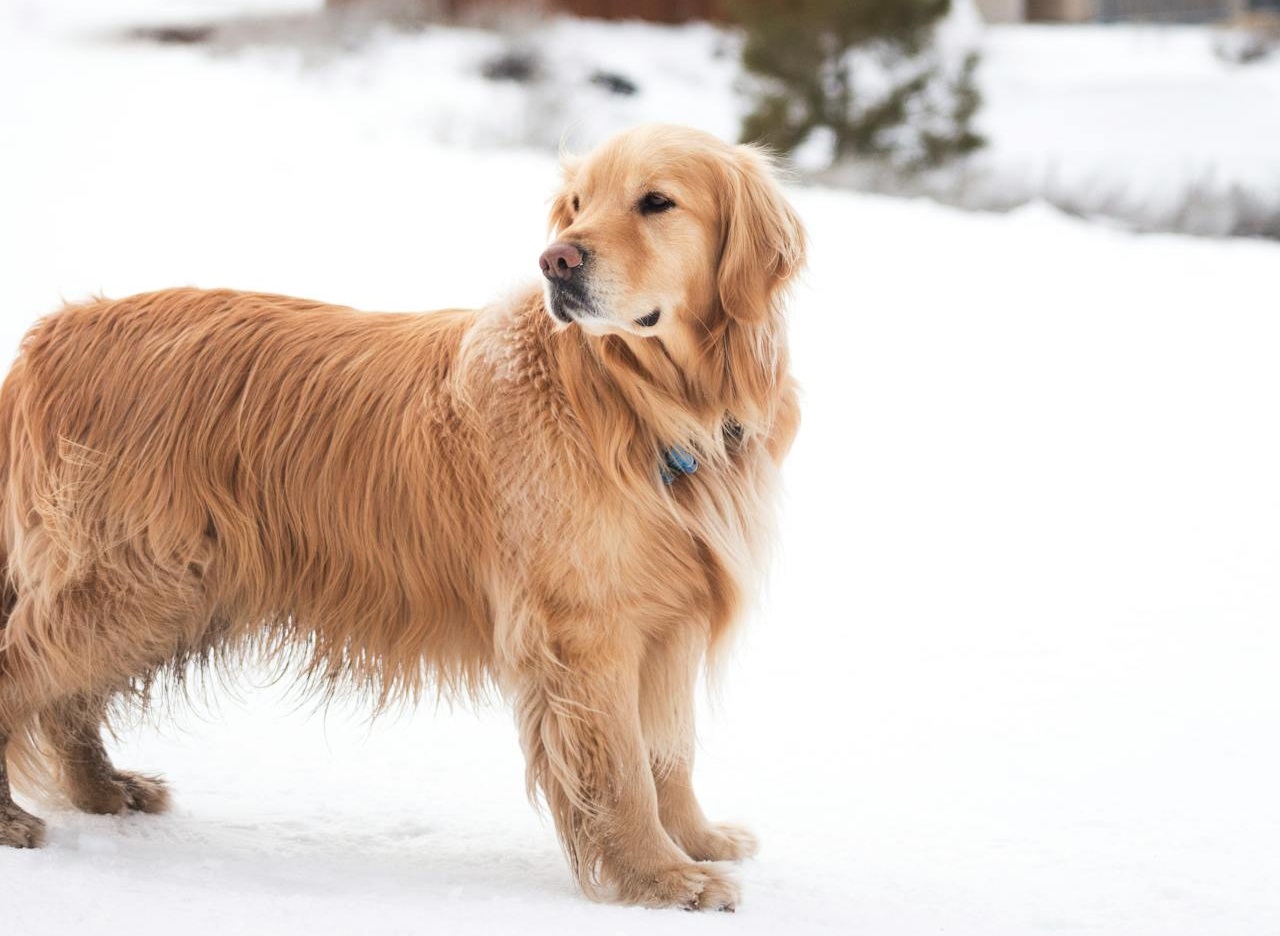In this article
View 4 More +Golden Retrievers are diverse animals. They are lively, active, athletic, smart, playful, and loyal to their family members. They don’t mind lounging around on a lazy weekend afternoon with the rest of the family, but they also won’t pass up an opportunity to get outside for a walk or a run in the park. Golden Retrievers can live in both hot and cold climates.
You may be wondering just how cold of a climate your Golden Retriever can put up with, though. It’s a great question to consider, especially if you plan on moving to or visiting a place where it reaches freezing temperatures. So, what temperatures can Golden Retrievers tolerate? The short answer is that Golden Retrievers can tolerate very low temperatures before they start to get too cold or become susceptible to hypothermia. Here is what you should know.

What is a Golden Retriever’s Cold Tolerance in Freezing Temperatures?
It’s considered freezing outside when water freezes. It may snow instead of rain, or the puddles in the driveway might ice over. This typically happens when the temperature reaches 32 degrees Fahrenheit. Freezing temperatures tend to be too much for us humans (even if it’s also sunny). However, Golden Retrievers don’t seem to mind the cold as much.
However, just because your Golden Retriever can handle freezing temperatures does not mean they should spend long periods of time outside. They are just as susceptible to getting too cold as we are. It is recommended that you strongly limit outdoor time when temperatures near 45 degrees Fahrenheit. Further, your dog should never be left to sleep outdoors in freezing temperatures.
Do Golden Retrievers Like Snow?

Most Golden Retrievers love to spend time in the snow! They will run and play as if it were a spring day in the park. They might roll around in the snow, jump into it and dig a tunnel, or even try to eat it. They don’t seem to mind getting their fur wet while they frolic. The problem is that they don’t always know that they need to get out of the snow before hypothermia sets in.
Therefore, it’s our job to make sure our dogs don’t stay out in the snow or freezing temperatures for too long. Bringing your dog inside as soon as any signs of being too cold are displayed is the best way to avoid the onset of problems like hypothermia.
Signs That Your Golden Retriever Is Too Cold
Your dog can’t verbally tell you when they are feeling too cold. However, they can display signs of discomfort and coldness that you should be aware of.
- Reluctance to move or walk
- Shivering
- Excessive whimpering
- Trying to keep their paws off the snow
- Consistently seeking shelter
- Limping
- Anxiety
If any of these signs develop, it means your dog needs to get warm as soon as possible. Make sure your dog is completely dry as soon as you get indoors. Use a towel or hair dryer to aid in the process if necessary. Consider lighting a fire or turning a portable heater on, then settling in near the heat source with your dog until they warm up and get their pep back.
Signs That Your Dog Has Developed Hypothermia
If your dog develops hypothermia, it can be a scary experience. They will show signs of the problem, so you will know when it happens.
- Dilated pupils
- Inability to pay attention
- Stiff muscle movement
- Lethargy
If the hypothermia gets too bad, your Golden Retriever may lose consciousness. It is important to get your dog to a veterinarian at the first sign of hypothermia. Wrap them in a blanket, and keep them as warm as possible while you’re on your way.
Keeping Your Golden Retriever Warm While They’re Outside in the Cold

There are a few things that you can do to keep your furry family members warm while they are playing outside in the snow or in freezing temperatures. For one thing, make sure they are totally dry before letting them outdoors. If they’re wet, the water in their coat may freeze and make them much colder.
You can also outfit your dog with a sweater or coat and maybe even boots while they’re spending time outdoors in the cold. Make sure your Golden Retriever stays active while outside. This will help keep their heart rate up and encourage the body to produce extra heat.

A Quick Recap
If your Golden Retriever wants to go out and play in the snow or spend time in freezing weather, there is no reason to stop them from doing so. Just take precautions to keep them as warm as possible, and don’t let them spend too much time out there at once. Consider investing in protective clothing for your dog, and keep an eye out for signs that they are getting too cold or even hypothermic.
Featured Image Credit: Tomas Anunziata, Pexels


















